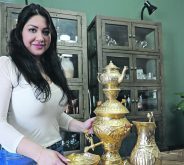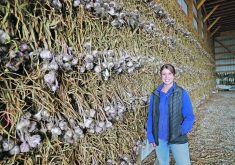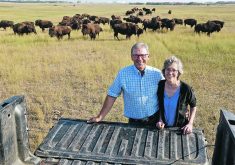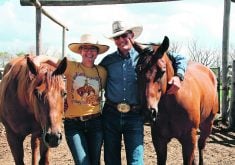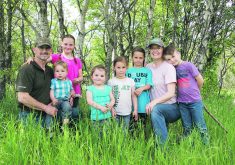On the Farm British Columbia woman finds a way to farm on her own while her husband works as a carpenter
Editor’s note: This story has been updated from the original with corrections.
SAANICHTON, B.C. — Silverwood Farm is a serene place hidden in a grove of trees beside the busy urban community of Saanichton.
Owned by the Radawetz family, the farm is home to Icelandic sheep, chickens and a vegetable operation.
Farming in the urban shadow is common for many living on Vancouver Island, where the agriculture land reserve is respected and allows small holdings like Silverwood, said Eva Jaycox about the farm she and partner Kevin Radawetz operate.
Read Also

Know what costs are involved in keeping crops in the bin
When you’re looking at full bins and rising calf prices, the human reflex is to hold on and hope for more. That’s not a plan. It’s a bet. Storage has a price tag.
After four years of looking they found the farm in 2010 where vegetables and sheep could be raised on a small acreage.
“We figured a nice (mix of products) would be good and then have a closed circuit so you have the animals feeding the plants,” she said.
Originally from northern British Columbia where her family had a small commercial flock, adjusting to the Mediterranean climate of Vancouver Island was a new experience.
The lowest temperature in winter is usually -10C and heavy snow may arrive around Christmas but it does not last long.
They plant vegetables into cold farms in March and continue harvesting until late November, growing a variety of crops, including 20 varieties of tomatoes, carrots, melons, peppers and strawberries that are sold to local customers, including some restaurants, every week.
Local people also stop by to get vegetables but stay to watch the sheep and chickens.
There are more parasites in this area compared to Smithers and feed costs are high.
Although the vegetable production continues to be organic, and the first few years of poultry products were organic, “It was something we knew right out of the gate that we weren’t going to be able to do the sheep organic,” she said.
“It was something we knew right out of the gate that we weren’t going to be able to do the sheep organic,” she said.
The chickens were organic but the cost of organic feed over the first few years doubled, and the farm couldn’t recover the costs.
“The customers are not going to pay $9 a dozen (for eggs) so we switched,” she said. After changing to regular feed, egg sales continued to be strong.
Although their farm is just off a busy main street, the local farms are protected under the provincial agriculture land reserve.
“There is a lot of respect for the ALR here. There is a lot of debate here before they let anything go,” she said.
The farm is also far enough off the beaten track that she doesn’t fear condominiums springing up next door to overshadow the peacefulness of her farm.
“Farming is a good business here,” she said, noting some of the neighbouring farms are about 100 years old.
Predators are an ongoing problem that she controls with two Great Pyrenees guard dogs and fencing.
The purebred Icelandic sheep are an important part of the farm. They selected the breed because she found them fascinating and regularly sells breeding stock and some go for meat.
“They are small and something that I could handle,” she said.
While the grass grows thigh high,the farm is always looking for rotational grazing spots for her sheep, which helps control parasites. This includes moving them to her mother’s nearby property. They keep the fast-growing weeds and shrub encroachment under control.
Icelandic sheep are a heritage breed known for their meat, milk and fibre.
The fleece is dual-coated with a fine, soft undercoat called thel and a longer, coarser outer coat called tog. The two fibres can be separated or spun together. They yield between four and seven pounds of fleece and many producers including Jaycox have them shorn twice a year.
Eva is a hand spinner and there are local crafters looking for the fine wool that ranges in colour from white to brown tones to black.
Icelandic sheep have an 1,100 year history. Originally brought to Iceland by the Vikings, they helped the early settlers survive. The breed has adapted and thrived with the ability to withstand cold and harsh conditions. A feed-efficient breed, they finish well on grass.
The rams are noted for large curving horns that encircle their faces while the ewes have smaller horns. They generally produce one, two or three lambs every spring.
The sheep can be registered through the Canadian Livestock Records Corp. The Icelandic Sheep Breeders of North America formed in 1996.




